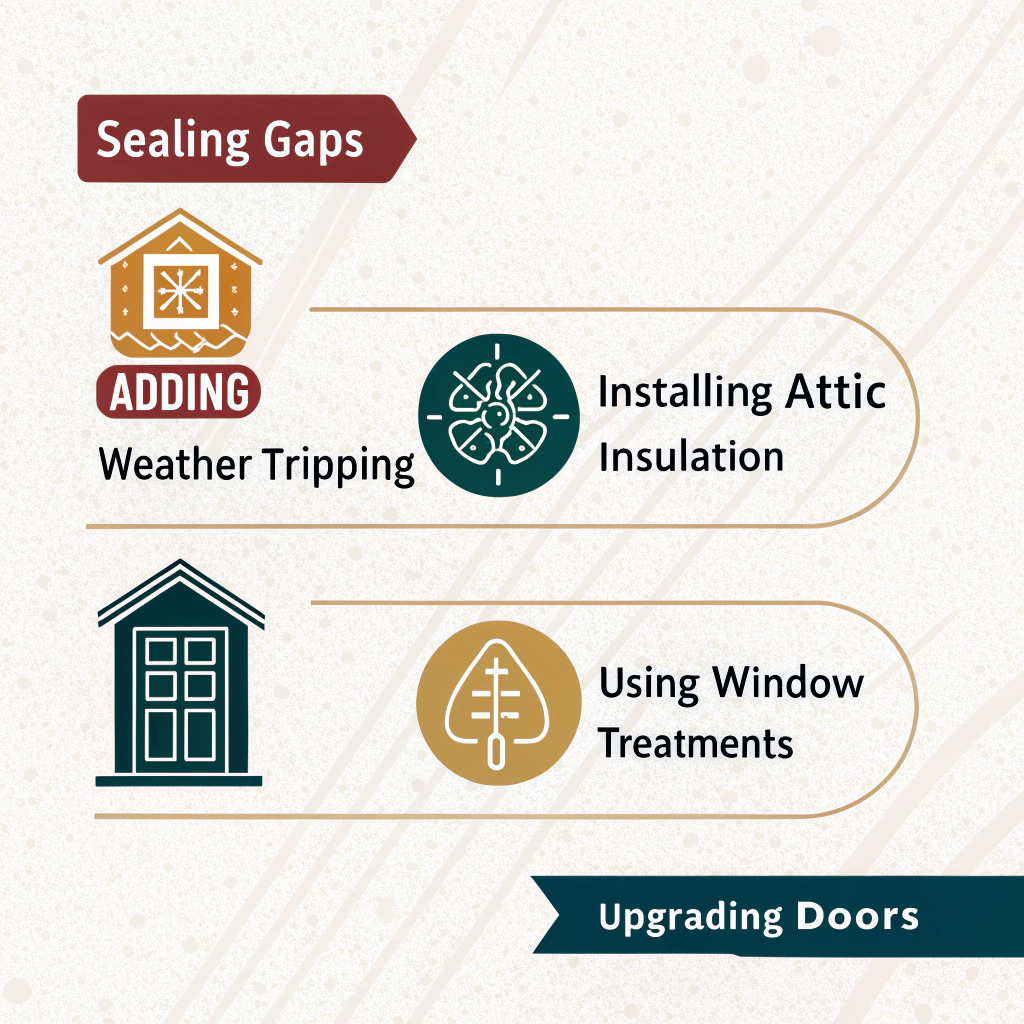Improving your home’s insulation is one of the most effective ways to enhance energy efficiency, reduce utility bills, and create a more comfortable living environment. Whether you’re a homeowner looking to make upgrades or a renter wanting to improve your space, understanding how to insulate your home properly can lead to significant benefits. In this article, we will explore five simple yet impactful ways to improve your home’s insulation, ensuring you stay warm in winter and cool in summer.
Why This Topic Is Worth Reading

Home insulation is often overlooked, yet it plays a crucial role in maintaining a comfortable indoor climate. Many homeowners are unaware that inadequate insulation can lead to energy loss, resulting in higher heating and cooling costs. By improving your insulation, you not only save money but also contribute to a more sustainable environment.
This article will provide you with practical tips that are easy to implement, regardless of your DIY experience. You’ll learn how to identify areas in your home that need insulation and discover cost-effective solutions that can make a significant difference.
Moreover, enhancing your home’s insulation can increase its value and appeal, making it a wise investment for the future. So, let’s dive into the five simple ways to improve your home’s insulation!
Key Highlights or Must-Know Points
- Improving insulation can lead to significant energy savings.
- Simple DIY projects can enhance your home’s comfort.
- Proper insulation increases property value.
- Regular maintenance and checks are essential for long-term benefits.
Five Simple Ways to Improve Your Home’s Insulation
- Seal Gaps and Cracks
Start by inspecting your home for any gaps or cracks around windows, doors, and other openings. Use caulk or weatherstripping to seal these areas, preventing drafts and heat loss. This simple step can significantly improve your home’s energy efficiency.
- Add Insulation to Attics and Crawl Spaces
Attics and crawl spaces are often the most significant sources of heat loss. Consider adding insulation batts or blown-in insulation to these areas. Ensure that you follow local building codes and safety guidelines when doing this.
- Upgrade Your Windows
If your windows are old or single-pane, consider upgrading to double or triple-pane windows. These windows provide better insulation and can drastically reduce energy costs. If replacement isn’t an option, window film or thermal curtains can also help.
- Insulate Your Pipes
Insulating your hot water pipes can prevent heat loss and save energy. Use foam pipe insulation sleeves to cover exposed pipes, especially those in unheated areas like basements or attics.
- Use Rugs and Carpets
Adding rugs or carpets can help insulate your floors, especially if you have tile or hardwood. They provide an extra layer of warmth and comfort, making your home feel cozier during colder months.
Extra Tips, Notes, or Warnings
- Check for Moisture
Before adding insulation, ensure that there are no moisture issues in your home. Damp insulation can lead to mold growth and other problems.
- Consider Professional Help
If you’re unsure about your insulation needs or how to install it, consider hiring a professional. They can provide expert advice and ensure that the job is done correctly.
- Regular Maintenance
Inspect your insulation regularly, especially after severe weather. Look for signs of wear or damage and address them promptly to maintain efficiency.
Common Questions Answered
1. How much can I save by improving my insulation?
Improving your insulation can save you anywhere from 10% to 50% on your energy bills, depending on the current state of your home.
2. Is it difficult to insulate my home myself?
Many insulation projects can be done by homeowners with basic DIY skills. However, some tasks may require professional assistance, especially in complex areas like attics.
3. How often should I check my insulation?
It’s a good idea to check your insulation at least once a year, especially before winter, to ensure it’s in good condition.
4. What type of insulation is best for my home?
The best type of insulation depends on your climate, home design, and budget. Common options include fiberglass, foam board, and spray foam insulation.
Final Thoughts
Improving your home’s insulation is a smart investment that pays off in comfort and savings. By following these five simple tips, you can create a more energy-efficient home that not only benefits you but also contributes to a healthier planet. Remember, even small changes can lead to significant improvements over time.
Get Involved
We encourage you to take action today! Start by inspecting your home for areas that need insulation and consider implementing one or more of the tips mentioned above. If you have any questions or want to share your experiences, feel free to leave a comment or reach out. For more wonderful content on home improvement and energy efficiency, check out Mind of Griff.
Leave a Reply